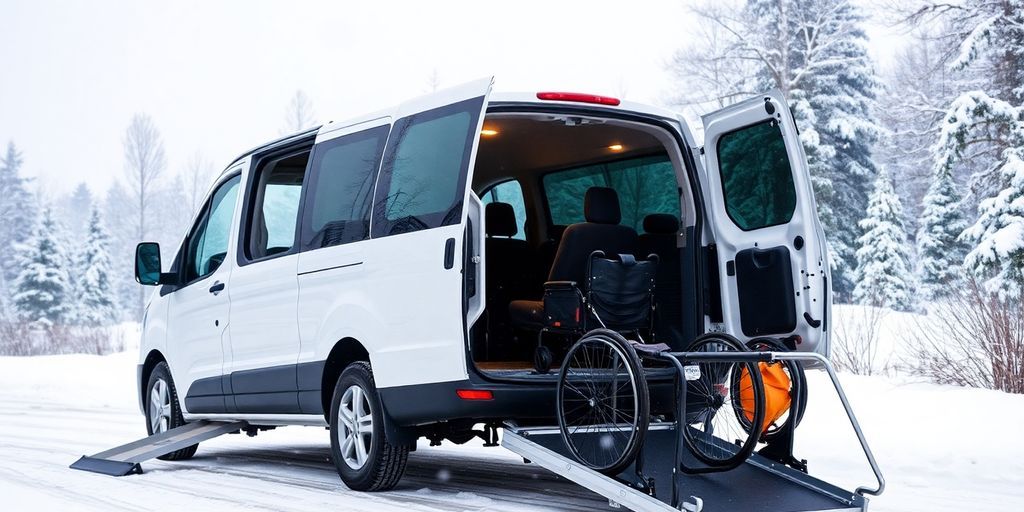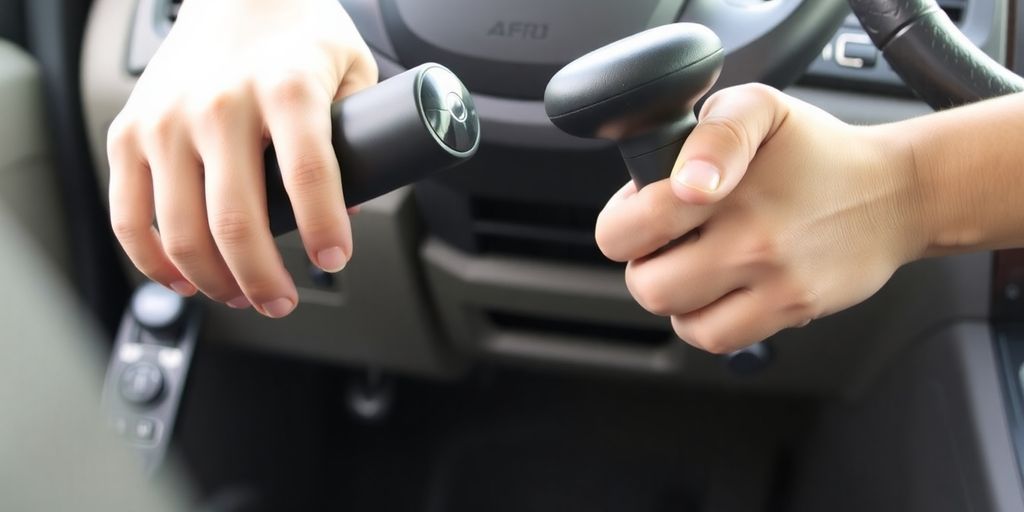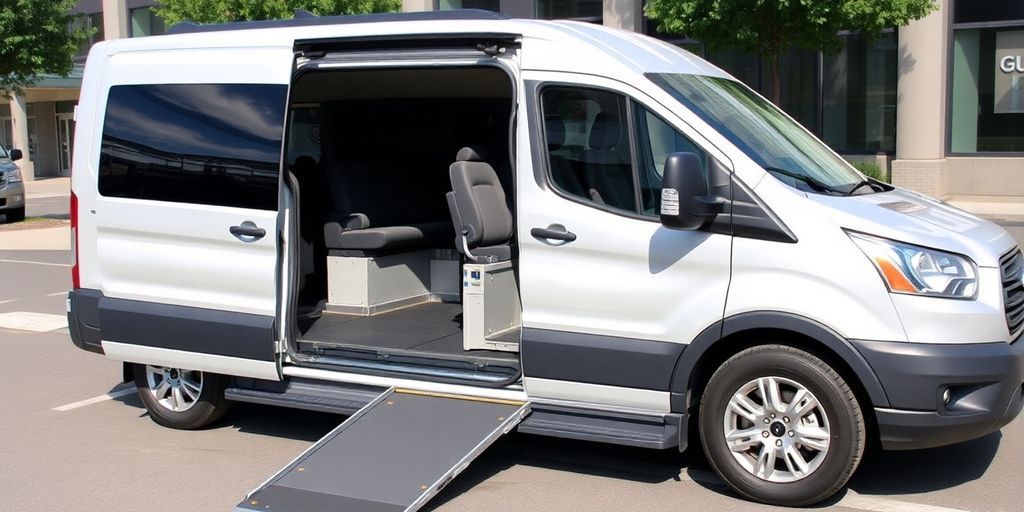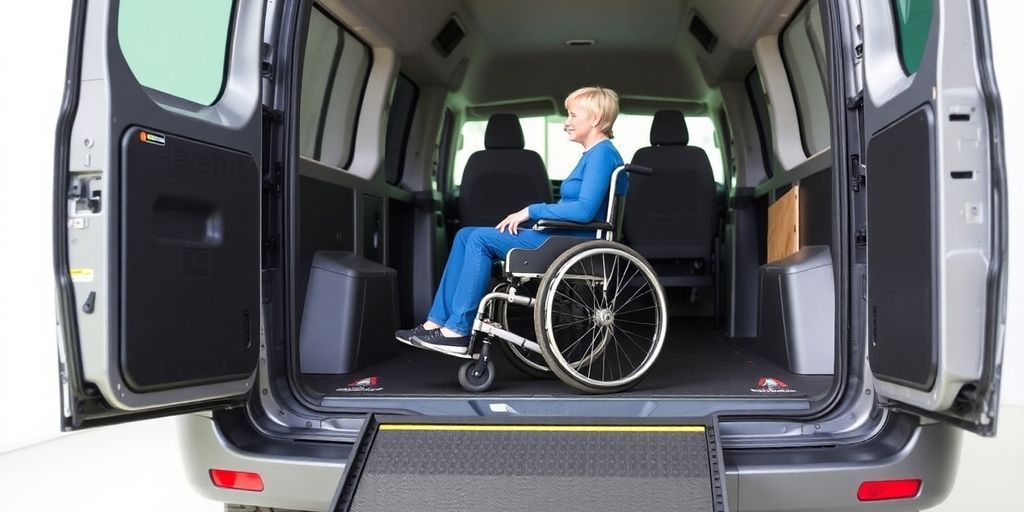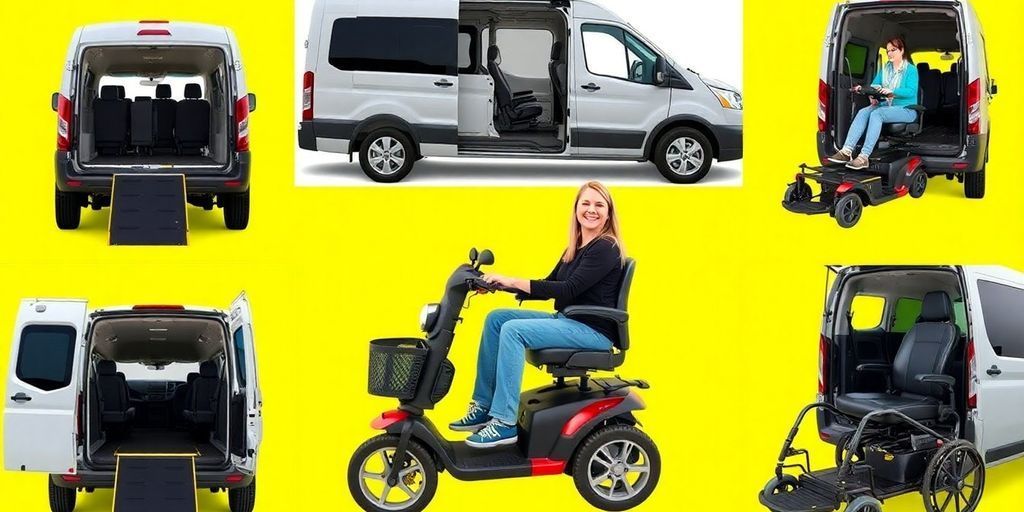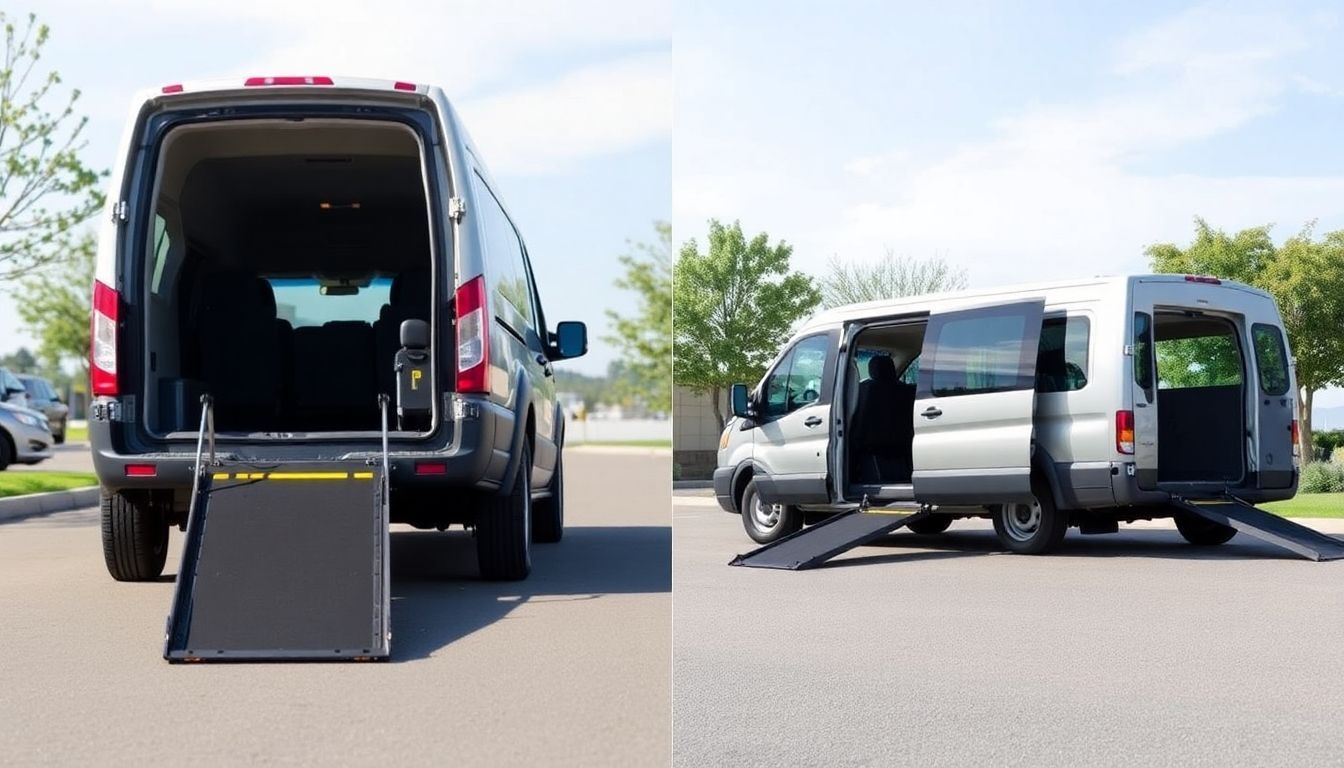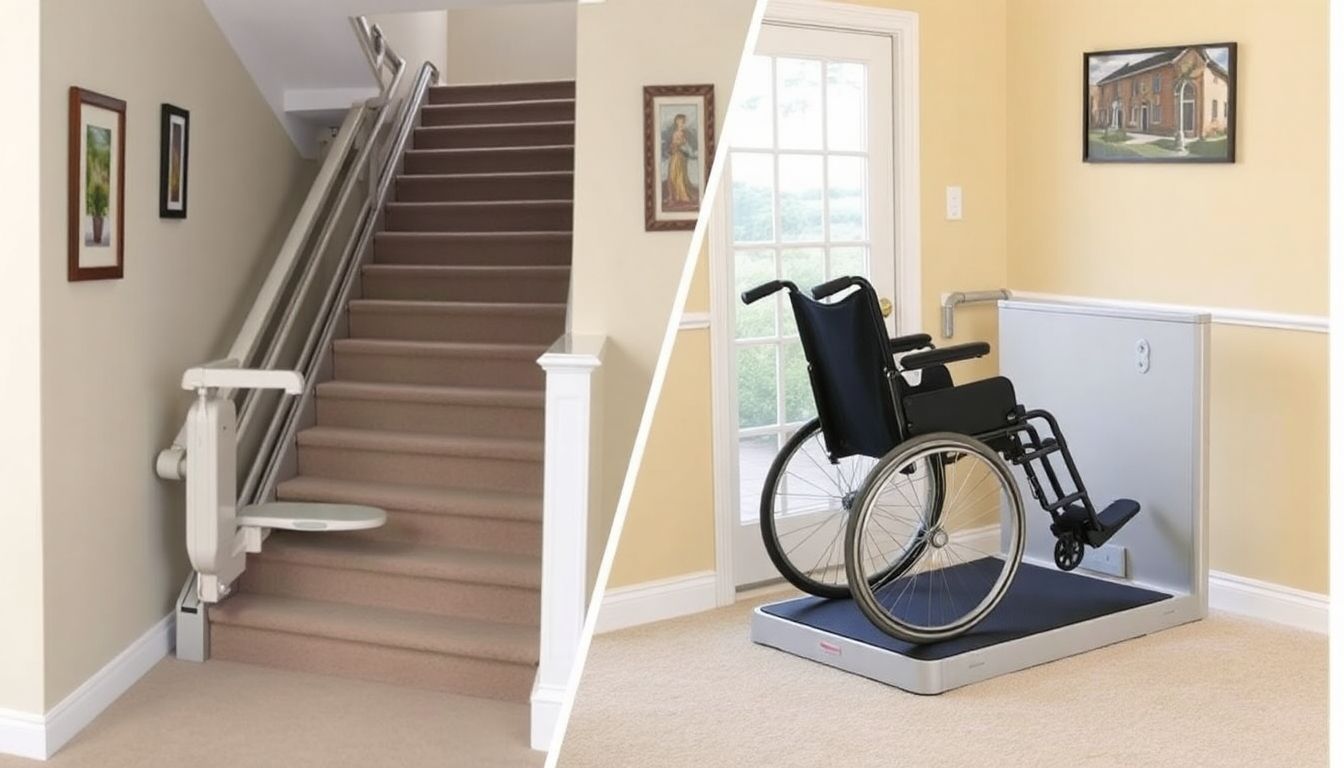Automating Lifts and Ramps: Future of Accessibility in the Oglethorpe Area
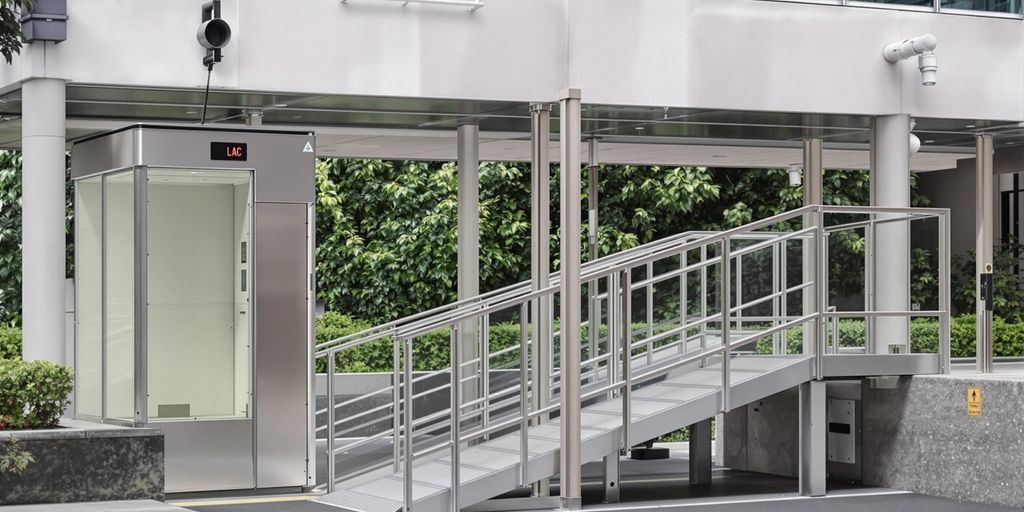
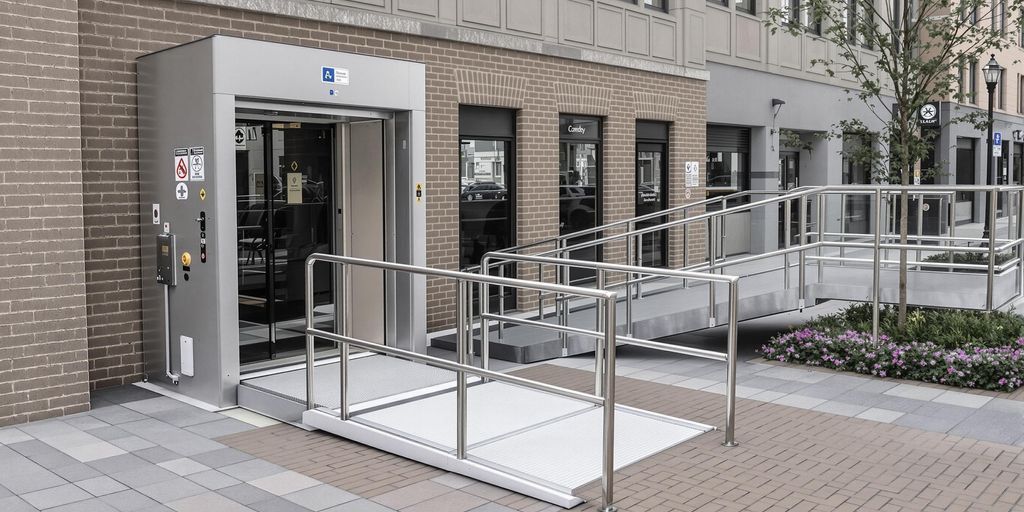
In the Oglethorpe area, accessibility is taking a big leap forward with the introduction of automated lifts and ramps. These technologies are making life easier for people with mobility challenges, allowing them to navigate their homes and public spaces with greater ease. From smart ramps to energy-efficient lifts, the future of accessibility is here, and it’s changing lives for the better.
Key Takeaways
- Automated lifts and ramps are transforming accessibility in the Oglethorpe area.
- These systems are designed to improve mobility for residents with physical challenges.
- Smart features and IoT integration are making accessibility solutions more user-friendly.
- Energy-efficient designs help reduce costs while maintaining functionality.
- Planning and maintenance are essential to maximize the benefits of automated systems.
The Role of Lift and Ramp Automation in Enhancing Accessibility
Understanding the Basics of Lift and Ramp Automation
Lift and ramp automation is all about making mobility easier for everyone, especially those with physical challenges. These systems use technology to operate automatically, removing the need for manual adjustments. Think of it like having a smart assistant for your mobility needs. Automated ramps often fold and unfold with the push of a button, while lifts can be programmed to stop at specific levels. This technology is transforming how people access their homes and public spaces.
Key Benefits for Residents in the Oglethorpe Area
Residents in the Oglethorpe area can gain a lot from these innovations:
- Convenience: Automated systems save time and effort compared to manual options.
- Safety: With features like sensors and smooth operations, risks of accidents are minimized.
- Independence: People with limited mobility can navigate their homes and communities more freely.
How Automation Improves Daily Mobility
Daily life becomes less of a hassle with automated lifts and ramps. Here’s how:
- Quick Access: No more waiting for someone to help; automation puts control in the user’s hands.
- Reliability: These systems are designed to work consistently, even in bad weather.
- Integration: Many automated systems can sync with smart home devices, making them even more user-friendly.
Small technological changes can lead to big improvements in quality of life for everyone. Whether it’s a home ramp or a public lift, automation is paving the way for a more accessible future.
Innovative Technologies in Lift and Ramp Systems
Smart Features in Modern Accessibility Solutions
Modern accessibility systems are packed with smart features to make daily life more convenient. For example, many lifts now include automated sensors that detect obstacles, stopping the system to prevent accidents. Another popular feature is remote operation via mobile apps, allowing users to control lifts or ramps from their phones. Voice command integration is also gaining traction, especially for those with limited hand mobility.
The Integration of IoT in Accessibility Equipment
The Internet of Things (IoT) is transforming accessibility equipment. With IoT-enabled lifts and ramps, users can monitor system performance in real time. This means issues like low battery or mechanical faults can be flagged immediately. Additionally, IoT systems can connect to smart home setups, syncing with devices like door locks or lighting for a smoother experience. Imagine your ramp deploying automatically when your wheelchair approaches—it’s not just futuristic; it’s happening now.
Energy Efficiency in Automated Systems
Energy efficiency is a growing focus in automated accessibility solutions. Many systems now feature power-saving modes, reducing energy consumption when not in use. Solar-powered lifts and ramps are also emerging, offering a more sustainable option for eco-conscious users. Even traditional electric models are being designed to use less power while maintaining performance.
"Innovative technologies in lifts and ramps aren’t just about convenience—they’re about creating a safer, more inclusive environment for everyone."
Planning and Installing Automated Accessibility Solutions
Steps to Assess Your Accessibility Needs
Before diving into the world of automated lifts and ramps, it’s important to take a step back and evaluate what you actually need. Start by considering who will benefit from these upgrades. Is it for an elderly family member, someone with mobility challenges, or just to future-proof your home? Think about the areas of your home or building that are hardest to navigate. Stairs? Narrow doorways? Outdoor inclines? These are the spots you’ll want to focus on first.
Here are three simple steps to get started:
- Walk through your home or building and note any obstacles to mobility.
- Consult with a professional who specializes in accessibility solutions.
- Prioritize your needs based on safety, frequency of use, and budget.
Choosing the Right Equipment for Your Home
Once you know what you need, it’s time to pick the right tools for the job. Automated lifts and ramps come in a variety of styles and functionalities. For example, vertical platform lifts are great for porches or decks, while automated ramps can be ideal for vehicles or smaller spaces. Think about the layout of your home and the kind of equipment that will blend seamlessly into your environment.
Here’s a quick breakdown of what to consider:
- Space available: Do you have enough room for a lift, or is a ramp more practical?
- Weight capacity: Ensure the equipment can handle the weight of the user and any additional equipment like wheelchairs.
- Ease of use: Look for features like remote controls, sensors, or automatic folding options.
Navigating Local Regulations and Permits
This part can feel like a headache, but it’s a necessary step. Many local governments have specific rules about installing accessibility equipment, especially if it’s outdoors or involves structural changes. Skipping this step can lead to fines or having to redo the work, so it’s better to get it right the first time.
Here’s what you’ll need to do:
- Check your city or county’s building codes for accessibility modifications.
- Apply for any necessary permits before starting installation.
- Hire a licensed contractor who knows how to work within local regulations.
Remember, planning ahead saves time and money in the long run. Whether it’s choosing the right equipment or getting the right permits, every step you take brings you closer to a more accessible and comfortable space.
Cost and Financing Options for Lift and Ramp Automation
Breaking Down the Costs of Installation
When it comes to installing automated lifts or ramps, the costs can vary widely depending on the type of equipment and the complexity of the installation. On average, a basic ramp installation might cost a few thousand dollars, while high-tech lifts with advanced features can run into tens of thousands. Factors like the size of the lift, the materials used, and whether custom modifications are needed all play a role in determining the price. Don’t forget to budget for ongoing maintenance and potential repairs down the line.
Exploring Financing and Grant Opportunities
Paying for accessibility upgrades can feel overwhelming, but there are several ways to make it more manageable. Here are a few options:
- Financing Plans: Many companies offer payment plans that let you spread the cost over several months or years.
- Grants and Subsidies: Look into local or national programs that provide financial assistance for home accessibility improvements. Some non-profits and government initiatives are designed to help with these costs.
- Insurance Coverage: Depending on your policy, some or all of the installation costs might be covered. It’s worth checking with your provider.
For example, if you're debating between a wheelchair lift and a ramp, consider reviewing resources like key differences between wheelchair lifts and ramps to weigh costs and benefits.
Long-Term Savings Through Automation
While the upfront cost of lift and ramp automation can be significant, it’s important to think about the long-term benefits. Automated systems often require less manual labor and reduce the risk of accidents, which can save money on caregiving or medical expenses. Plus, modern systems are designed to be energy-efficient, which can help lower your utility bills over time. Investing in automation now could mean fewer expenses and headaches in the future.
Making your home or community more accessible isn’t just about convenience; it’s about creating a space where everyone can thrive.
Maintaining and Upgrading Accessibility Equipment
Routine Maintenance Tips for Longevity
Keeping accessibility equipment in good shape is all about consistency. Regular inspections can help catch wear and tear before it turns into a bigger issue. For example, check ramps for signs of rust or loose screws, and clean lift mechanisms to prevent debris buildup. A quick monthly check can save you from costly repairs later. Don’t forget to test battery-powered devices, like stairlifts, regularly to ensure they’re holding a charge.
Here’s a simple maintenance checklist:
- Inspect all moving parts for smooth operation.
- Tighten any loose bolts or screws.
- Lubricate hinges and tracks as recommended by the manufacturer.
- Clean surfaces to remove dirt and grime.
Signs It’s Time to Upgrade Your System
Even with the best care, equipment doesn’t last forever. If your lift or ramp feels less stable than it used to, or if it’s no longer meeting your needs, it might be time for an upgrade. Look out for these red flags:
- Frequent breakdowns or malfunctions.
- Outdated technology that lacks modern safety features.
- Equipment that no longer fits your mobility requirements.
Upgrading to newer models can also mean better energy efficiency and added features, like smart controls or quieter operation.
"Think of it as an investment in your independence and safety. Newer systems often pay for themselves in reliability and ease of use."
Finding Reliable Service Providers in the Oglethorpe Area
When it’s time for maintenance or a replacement, finding a trustworthy service provider is key. Look for companies with strong reviews and experience in accessibility solutions. Ask questions about warranties, response times for repairs, and whether they offer emergency services.
For those in the Oglethorpe area, accessibility upgrades can also boost property values, making them a smart choice not just for functionality but for your home’s overall worth.
By staying proactive with maintenance and knowing when to upgrade, you’ll ensure that your accessibility equipment continues to meet your needs for years to come.
Community Impact of Accessibility Enhancements
Improving Quality of Life for Residents
Accessibility upgrades, like lifts and ramps, don’t just make buildings easier to navigate—they transform lives. For seniors and individuals with disabilities, these enhancements mean greater independence and a chance to engage in everyday activities without constant assistance. Being able to access your favorite café or visit a friend’s home without barriers is a game-changer. It’s not just about convenience; it’s about dignity. When spaces are accessible, people feel included and valued in their communities.
Boosting Property Values Through Accessibility
Believe it or not, homes and businesses with accessibility features often see a bump in value. Why? Because they appeal to a broader audience. Families with elderly relatives, homeowners planning for the future, and even potential buyers with mobility challenges prioritize spaces that are already equipped with ramps, lifts, or wide doorways. Accessibility isn’t just a kindness; it’s a smart investment. It makes properties more marketable and future-proof.
Encouraging Inclusivity in Public Spaces
Public spaces are where communities come together, and accessibility ensures that everyone can participate. Whether it’s a park, library, or local event, features like ramps, elevators, and tactile signage make a world of difference. When public spaces are inclusive, they send a clear message: everyone belongs. This fosters a sense of unity and encourages more community engagement, which benefits everyone.
Accessibility isn’t just a feature—it’s a foundation for stronger, more inclusive communities. By making spaces usable for all, we create environments where everyone feels welcome, respected, and part of the fabric of daily life.
Future Trends in Lift and Ramp Automation
Advancements in AI for Accessibility
Artificial intelligence is rewriting the rulebook for accessibility. Imagine lifts and ramps that "learn" user habits over time—like predicting when someone needs access and adjusting settings automatically. AI-driven systems could even detect emergencies, such as a user falling, and send alerts. These innovations aren't just cool; they can genuinely make life safer and easier.
The Role of Robotics in Mobility Solutions
Robotics is stepping up in a big way. Picture a ramp that unfolds itself when your wheelchair approaches or a lift that adjusts its platform height in real-time for extra comfort. Robotic precision ensures smoother, more reliable operation. Plus, with modular designs becoming more common, these systems are easier to repair and upgrade.
Predictions for the Next Decade
Looking ahead, here are some likely developments:
- Voice-activated systems: No buttons, just say the word, and the lift or ramp responds.
- Energy-efficient designs: Solar-powered ramps and lifts could become mainstream, reducing costs and environmental impact.
- Integration with smart home ecosystems: Your accessibility equipment could sync with your home’s lighting, security, and even your car.
It’s clear that the future of lift and ramp automation is about more than just mobility—it’s about creating a seamless, connected experience for everyone.
As we look ahead, the world of lift and ramp automation is evolving rapidly. New technologies are making these systems smarter and more efficient, ensuring that everyone can access the spaces they need. If you're curious about how these advancements can improve your life, visit our website for more information. Don't miss out on the future of mobility!
Conclusion
In the Oglethorpe area, the push for better accessibility through automated lifts and ramps is more than just a convenience—it's a step toward independence for many. These tools are making homes and public spaces easier to navigate, whether it's a ramp for a front porch or a lift to tackle stairs. The options out there are growing, and they’re becoming more affordable and customizable. If you're considering making changes to your home or vehicle, now’s a great time to explore what’s available. With the right setup, life can feel a little more manageable and a lot more free.
Frequently Asked Questions
What is lift and ramp automation?
Lift and ramp automation refers to the use of advanced technology to make lifts and ramps operate automatically. This helps people with mobility challenges move around more easily and safely.
How do automated ramps and lifts improve accessibility?
Automated ramps and lifts remove barriers by making it easier for people with disabilities to enter buildings, navigate stairs, or access elevated areas without assistance.
Are automated lifts and ramps expensive to install?
The cost depends on the type of system and the complexity of installation. However, there are financing options and grants available to help with the expenses.
What maintenance is required for automated accessibility equipment?
Routine checks, cleaning, and occasional servicing by professionals are needed to keep automated lifts and ramps in good working condition.
Can automated lifts and ramps be installed in older homes?
Yes, automated systems can be customized to fit older homes. Professional installers can assess your space and recommend the best options.
Are there grants or financial aid for lift and ramp automation?
Yes, many local and national programs offer financial assistance or grants to make accessibility solutions more affordable for individuals and families.
First Responders & Military Discount + VA Approved
PRODUCTS AND SERVICES
North Georgia Mobility | All Rights Reserved | Powered By Flypaper | Privacy Policy

